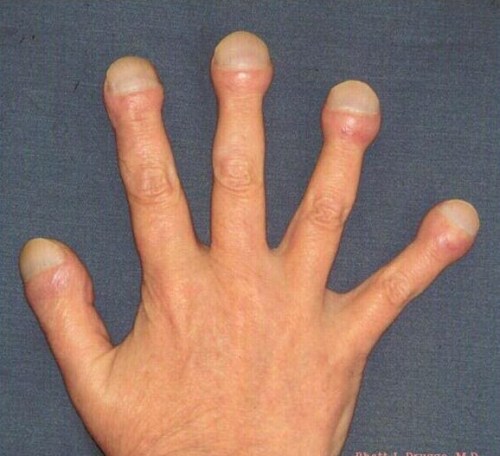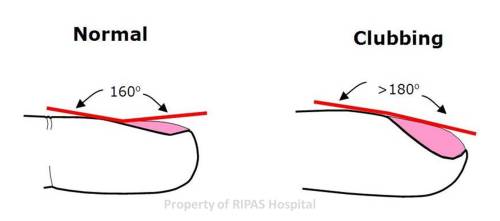sanödox
Health Care Education [Environmental health, Physical health, Social health, Emotional health, Intellectual health, and Spiritual health] The purpose of health education is to positively influence the health behavior of individuals as well as the living and working conditions that influence their health.
Feb 4, 2014
Jan 11, 2014
Winter Weather Health: HYPOTHERMIA and FROSTBITE
What is HYPOTHERMIA?
When exposed to cold temperatures, your body begins to lose heat faster than it can be produced. The result is hypothermia, or abnormally low body temperature. Body temperature that is too low affects the brain, making the victim unable to think clearly or move well. This makes hypothermia particularly dangerous because a person may not know it is happening and won't be able to do anything about it.Hypothermia occurs most commonly at very cold environmental temperatures, but can occur even at cool temperatures (above 40°F) if a person becomes chilled from rain, sweat, or submersion in cold water.
Who is most at risk for hypothermia?
Victims of hypothermia are most often:- elderly people with inadequate food, clothing, or heating
- babies sleeping in cold bedrooms
- children left unattended
- adults under the influence of alcohol
- mentally ill individuals
- people who remain outdoors for long periods—the homeless, hikers, hunters, etc.
What are the warning signs for hypothermia?
Labels:
body temperature,
Cold,
freezing,
frostbite,
hypothermia,
winter
0
Comments
Dec 14, 2013
Hippocratic fingers (Nail clubbing)
Clubbing (nail clubbing or Hippocratic fingers ) is a deformity of the fingers and fingernails, with changing of the distant finger phalanges into the form of a drumstick or fingernails into the form of a watch-glass presents a well-known clinical phenomenon that suggests the presence of various diseases, especially those associated with hypoxia, mostly of the heart and lungs.
Source:
http://www.nlm.nih.gov/medlineplus/ency/article/003282.htm
http://emedicine.medscape.com/article/1105946-overview
Labels:
clubbing,
Health,
Heart,
hippocratic fingers,
hypoxia,
Lungs,
nails
0
Comments
Aug 23, 2013
Multiple Chemical Sensitivity: a diagnosis not to be missed.
Environmental Health and Safety
Brief Overview
People in modern societies spend more than 90% of their time indoors. Hence, indoor environmental quality (IEQ) has a significant impact on public health. In this article are described health risks associated with indoor environments, illuminate barriers to overcoming these risks, and provide policy recommendations to achieve healthier indoor environments.
 Indoor environmental quality (IEQ) refers to the quality of a
building’s environment in relation to the health and well-being of those
who occupy space within it. IEQ is determined by many factors,
including lighting, air quality, and damp conditions. Workers are often
concerned that they have
symptoms or health conditions from exposures
to contaminants in the buildings where they work. One
reason for this concern is that their symptoms often get better when
they are not in the building.
While research has shown that some respiratory symptoms
and illnesses can be associated with damp buildings, it is still unclear
what measurements of indoor
contaminants show that workers are at risk for disease.
In most instances where a worker and his or her physician suspect that
the building environment
is causing a specific health condition, the information
available from medical tests and tests of the environment is not
sufficient to establish which
contaminants are responsible. Despite uncertainty about
what to measure and how to interpret what is measured, research shows
that building-related
symptoms are associated with building characteristics,
including dampness, cleanliness, and ventilation characteristics.
Indoor environmental quality (IEQ) refers to the quality of a
building’s environment in relation to the health and well-being of those
who occupy space within it. IEQ is determined by many factors,
including lighting, air quality, and damp conditions. Workers are often
concerned that they have
symptoms or health conditions from exposures
to contaminants in the buildings where they work. One
reason for this concern is that their symptoms often get better when
they are not in the building.
While research has shown that some respiratory symptoms
and illnesses can be associated with damp buildings, it is still unclear
what measurements of indoor
contaminants show that workers are at risk for disease.
In most instances where a worker and his or her physician suspect that
the building environment
is causing a specific health condition, the information
available from medical tests and tests of the environment is not
sufficient to establish which
contaminants are responsible. Despite uncertainty about
what to measure and how to interpret what is measured, research shows
that building-related
symptoms are associated with building characteristics,
including dampness, cleanliness, and ventilation characteristics.
Brief Overview
People in modern societies spend more than 90% of their time indoors. Hence, indoor environmental quality (IEQ) has a significant impact on public health. In this article are described health risks associated with indoor environments, illuminate barriers to overcoming these risks, and provide policy recommendations to achieve healthier indoor environments.
 Indoor environmental quality (IEQ) refers to the quality of a
building’s environment in relation to the health and well-being of those
who occupy space within it. IEQ is determined by many factors,
including lighting, air quality, and damp conditions. Workers are often
concerned that they have
symptoms or health conditions from exposures
to contaminants in the buildings where they work. One
reason for this concern is that their symptoms often get better when
they are not in the building.
While research has shown that some respiratory symptoms
and illnesses can be associated with damp buildings, it is still unclear
what measurements of indoor
contaminants show that workers are at risk for disease.
In most instances where a worker and his or her physician suspect that
the building environment
is causing a specific health condition, the information
available from medical tests and tests of the environment is not
sufficient to establish which
contaminants are responsible. Despite uncertainty about
what to measure and how to interpret what is measured, research shows
that building-related
symptoms are associated with building characteristics,
including dampness, cleanliness, and ventilation characteristics.
Indoor environmental quality (IEQ) refers to the quality of a
building’s environment in relation to the health and well-being of those
who occupy space within it. IEQ is determined by many factors,
including lighting, air quality, and damp conditions. Workers are often
concerned that they have
symptoms or health conditions from exposures
to contaminants in the buildings where they work. One
reason for this concern is that their symptoms often get better when
they are not in the building.
While research has shown that some respiratory symptoms
and illnesses can be associated with damp buildings, it is still unclear
what measurements of indoor
contaminants show that workers are at risk for disease.
In most instances where a worker and his or her physician suspect that
the building environment
is causing a specific health condition, the information
available from medical tests and tests of the environment is not
sufficient to establish which
contaminants are responsible. Despite uncertainty about
what to measure and how to interpret what is measured, research shows
that building-related
symptoms are associated with building characteristics,
including dampness, cleanliness, and ventilation characteristics.Aug 13, 2013
Fissured Tongue
Pathophysiology
Fissured tongue affects only the tongue and is a finding in Melkersson-Rosenthal syndrome, which consists of a triad of fissured tongue, granulomatous cheilitis, and cranial nerve VII paralysis (Bell palsy)Epidemiology
Frequency
United States: ~ 2-5% of the population.
International: 21% worldwide population.
Fissured tongue is a totally benign condition and is considered by most to be a variant of normal tongue architecture. When seen in association with Melkersson-Rosenthal syndrome, the morbidity is due not to the fissured tongue but is secondary to the granulomatous inflammation of the lips/facial soft tissues and facial paralysis.Read more :
http://emedicalhub.com/fissured-tongue/
http://emedicine.medscape.com/article/1078536-overview
Subscribe to:
Posts (Atom)




